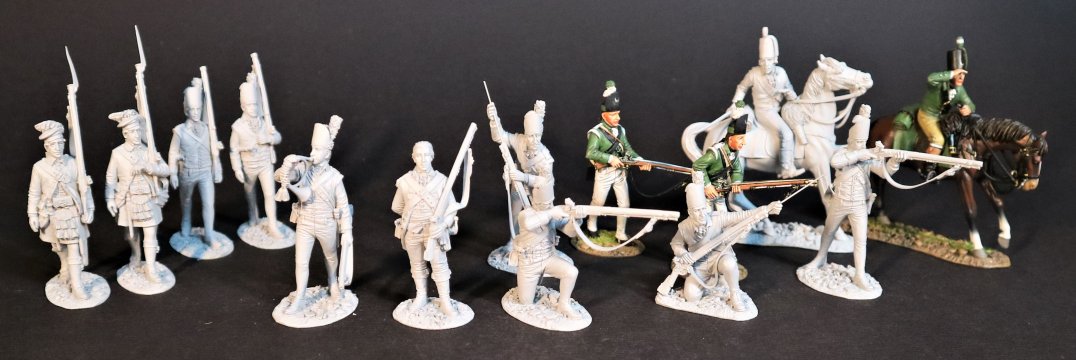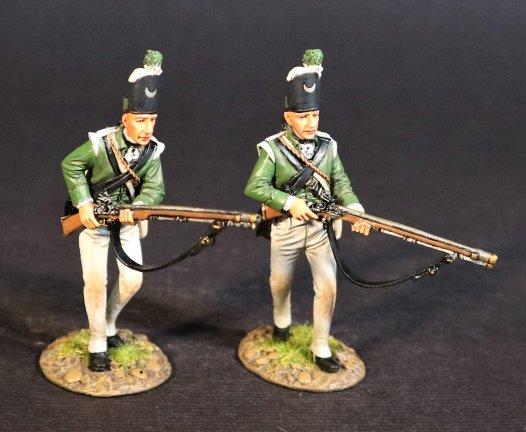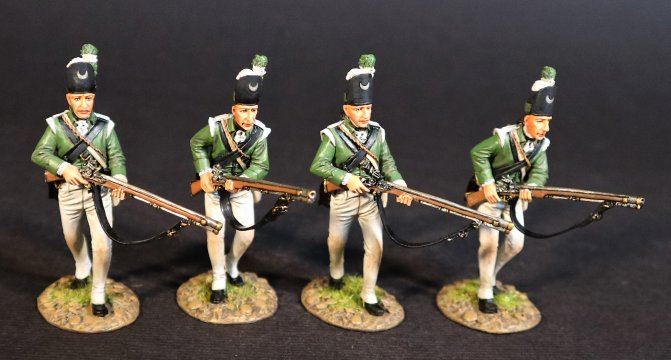- Joined
- Feb 2, 2011
- Messages
- 2,093
NEW RELEASES FOR JUNE 2023
THE EIGHTEENTH CENTURY COLLECTION
THE AMERICAN WAR OF INDEPENDENCE 1775 – 1783
THE BATTLE OF COWPENS, JANUARY 17[SUP]th[/SUP], 1781.
The Battle of Cowpens was an engagement during the American Revolutionary War fought on January 17[SUP]th[/SUP] 1781, near the town of Cowpens, South Carolina, between American forces under Brigadier General Daniel Morgan, and British forces under Lieutenant Colonel Banastre Tarleton, as part of the campaign in the Carolinas.
The battle was a turning point in the American reconquest of South Carolina from the British.
Tarleton’s force of 1,000 British troops were set against 2,000 troops under Morgan. Morgan’s forces suffered casualties of only 25 killed and 124 wounded. Tarleton’s force was almost completely eliminated with almost 30% casualties and 55% of his force captured or missing, with Tarleton himself and only about 200 British troops escaping.
Morgan’s forces conducted a double envelopment of the British forces, the only double envelopment of the war.
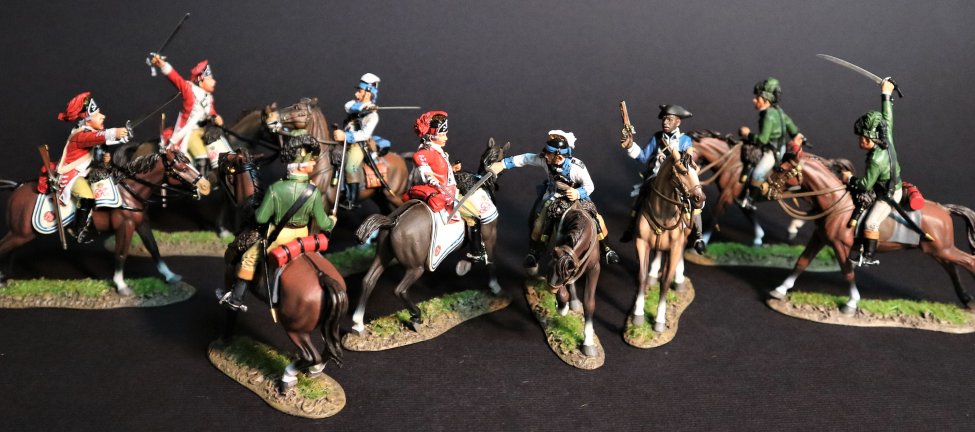
AMERICAN CONTINENTAL AND MILITIA DRAGOONS
One of Brigadier General Daniel Morgan’s greatest concerns was his lack of adequate numbers of dragoons. Dragoons served both sides as scouts, mounted pickets, mobile reserves, and shock troops. One of their primary functions was to exploit a victory by riding down the remnants of broken enemy infantry. Weapons included a carbine and a brace of heavy pistols, Although according to Colonel William Washington the “only necessary weapon a dragoon carries” was the sabre.
Several small volunteer militia contingents were hastily equipped as dragoons to reinforce the cavalry, as it was well known the strength of Tarleton’s mounted legion.
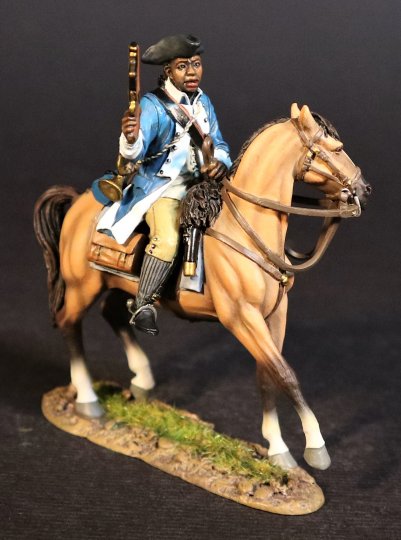
CW3LD-02
THE AMERICAN WAR OF INDEPENDENCE 1775 – 1783
THE BATTLE OF COWPENS, JANUARY 17[SUP]th[/SUP], 1781.
AMERICAN CONTINENTAL AND MILITIA DRAGOONS,
THIRD CONTINENTAL DRAGOONS,
GILLIE.
(2 pcs)
THE BRITISH LEGION
The British Legion was a British provincial regiment established during the American Revolutionary War, composed of British loyalist American infantry and dragoons. It was known as Tarleton’s Raiders after the British officer who led most of its day to day activities, Lieutenant Colonel Banastre Tarleton, and the green uniform coats. It was an unit the size of a regiment consisting of infantry, cavalry, and artillery, and able to operate independently.
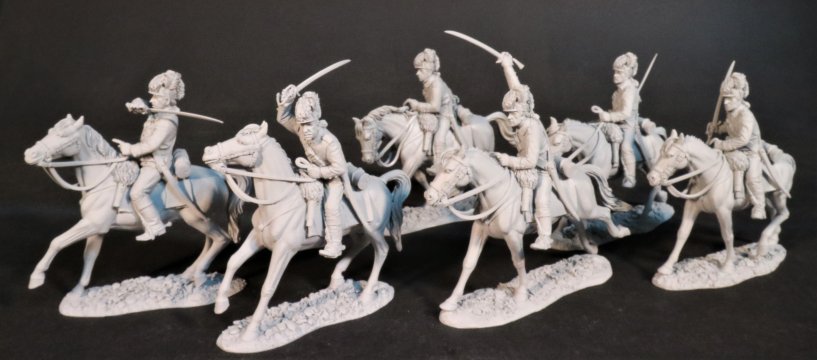
The unit was raised in New York in July 1778 by Sir Henry Clinton in order to merge combined infantry and cavalry forces and a battery of light artillery.
The regiment was commanded by William Lord Cathcart, as colonel.
Once the unit left New York, Banastre Tarleton was commissioned as Lieutenant colonel, and took full operational command.
The Legion’s peak operational strength was approximately 250 cavalry and 200 infantry.
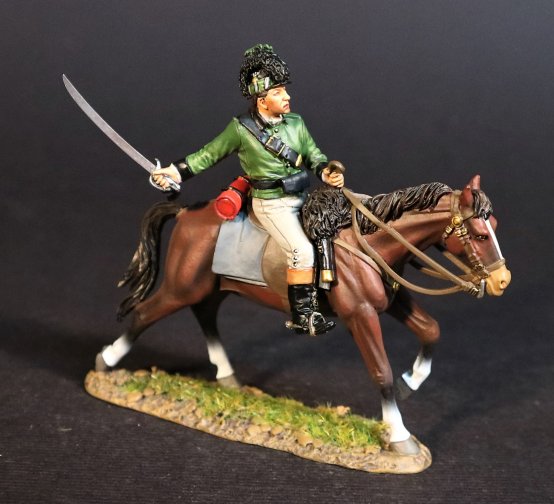
CWBL-03
THE AMERICAN WAR OF INDEPENDENCE 1775 – 1783
THE BATTLE OF COWPENS, JANUARY 17[SUP]th[/SUP], 1781.
THE BRITISH LEGION – “TARLETON’S RAIDERS”,
TROOPER.
(2 pcs)
THE 71[SUP]st[/SUP] REGIMENT OF FOOT
The Battle of Cowpens was an engagement during the American Revolutionary War fought on January 17[SUP]th[/SUP] 1781, near the town of Cowpens, South Carolina, between American forces under Brigadier General Daniel Morgan, and British forces under Lieutenant Colonel Banastre Tarleton, as part of the campaign in the Carolinas.
The battle was a turning point in the American reconquest of South Carolina from the British.
Tarleton’s force of 1,000 British troops were set against 2,000 troops under Morgan. Morgan’s forces suffered casualties of only 25 killed and 124 wounded. Tarleton’s force was almost completely eliminated with almost 30% casualties and 55% of his force captured or missing, with Tarleton himself and only about 200 British troops escaping.
Morgan’s forces conducted a double envelopment of the British forces, the only double envelopment of the war.
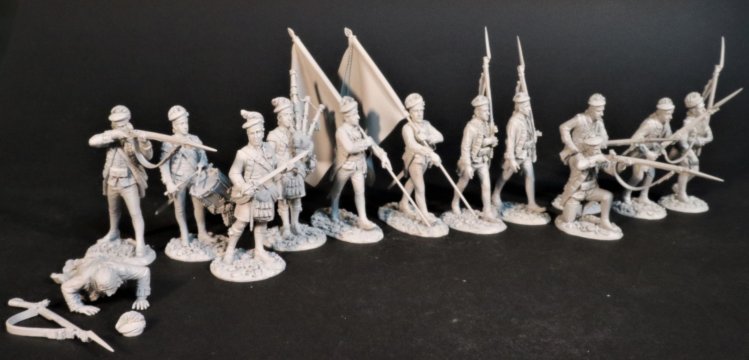
The 71[SUP]st[/SUP] Regiment of Foot was a regiment of infantry raised in 1775, and unofficially known as Fraser’s Highlanders. It was disbanded in 1786.
The regiment was raised at Inverness, Stirling and Glasgow by Lieutenant- General Simon Fraser of Lovat as the 71[SUP]st[/SUP] Regiment of Foot in 1775.
It was specifically intended for service in the American Revolutionary War.
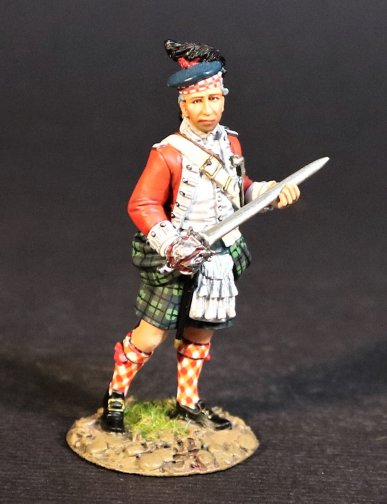
CW71-01
THE AMERICAN WAR OF INDEPENDENCE 1775 – 1783
THE BATTLE OF COWPENS, JANUARY 17[SUP]th[/SUP], 1781.
THE BRITISH ARMY,
1[SUP]st[/SUP] BATTALION, 71[SUP]st[/SUP] REGIMENT OF FOOT.
INFANTRY OFFICER.
(1 pc)
After service in the northern colonies, the regiment was sent south in December 1778. From that time forward all parts of the regiment were involved in most actions of the southern campaign. The 71[SUP]st[/SUP] was to incorporate numerous colonial recruits, though the morale of the unit as a regular regiment was high.
The 1[SUP]st[/SUP] Battalion under Major Archibald McArthur was assigned to Tarleton’s command to pursue Daniel Morgan’s Flying army until the clash at Cowpens. The only men to escape the Cowpens debacle were those few left guarding the baggage train in the rear. As a result of the defeat the regiment thereafter wore no uniform facings. The officers of the 71[SUP]st[/SUP] petitioned Cornwallis that the regiment never again serve under Tarleton’s command, and Cornwallis honoured the request.
The remnants of the 71[SUP]st[/SUP] would fight on, and surrendered at Yorktowm.
THE EIGHTEENTH CENTURY COLLECTION
THE AMERICAN WAR OF INDEPENDENCE 1775 – 1783
THE BATTLE OF COWPENS, JANUARY 17[SUP]th[/SUP], 1781.
The Battle of Cowpens was an engagement during the American Revolutionary War fought on January 17[SUP]th[/SUP] 1781, near the town of Cowpens, South Carolina, between American forces under Brigadier General Daniel Morgan, and British forces under Lieutenant Colonel Banastre Tarleton, as part of the campaign in the Carolinas.
The battle was a turning point in the American reconquest of South Carolina from the British.
Tarleton’s force of 1,000 British troops were set against 2,000 troops under Morgan. Morgan’s forces suffered casualties of only 25 killed and 124 wounded. Tarleton’s force was almost completely eliminated with almost 30% casualties and 55% of his force captured or missing, with Tarleton himself and only about 200 British troops escaping.
Morgan’s forces conducted a double envelopment of the British forces, the only double envelopment of the war.

AMERICAN CONTINENTAL AND MILITIA DRAGOONS
One of Brigadier General Daniel Morgan’s greatest concerns was his lack of adequate numbers of dragoons. Dragoons served both sides as scouts, mounted pickets, mobile reserves, and shock troops. One of their primary functions was to exploit a victory by riding down the remnants of broken enemy infantry. Weapons included a carbine and a brace of heavy pistols, Although according to Colonel William Washington the “only necessary weapon a dragoon carries” was the sabre.
Several small volunteer militia contingents were hastily equipped as dragoons to reinforce the cavalry, as it was well known the strength of Tarleton’s mounted legion.

CW3LD-02
THE AMERICAN WAR OF INDEPENDENCE 1775 – 1783
THE BATTLE OF COWPENS, JANUARY 17[SUP]th[/SUP], 1781.
AMERICAN CONTINENTAL AND MILITIA DRAGOONS,
THIRD CONTINENTAL DRAGOONS,
GILLIE.
(2 pcs)
THE BRITISH LEGION
The British Legion was a British provincial regiment established during the American Revolutionary War, composed of British loyalist American infantry and dragoons. It was known as Tarleton’s Raiders after the British officer who led most of its day to day activities, Lieutenant Colonel Banastre Tarleton, and the green uniform coats. It was an unit the size of a regiment consisting of infantry, cavalry, and artillery, and able to operate independently.

The unit was raised in New York in July 1778 by Sir Henry Clinton in order to merge combined infantry and cavalry forces and a battery of light artillery.
The regiment was commanded by William Lord Cathcart, as colonel.
Once the unit left New York, Banastre Tarleton was commissioned as Lieutenant colonel, and took full operational command.
The Legion’s peak operational strength was approximately 250 cavalry and 200 infantry.

CWBL-03
THE AMERICAN WAR OF INDEPENDENCE 1775 – 1783
THE BATTLE OF COWPENS, JANUARY 17[SUP]th[/SUP], 1781.
THE BRITISH LEGION – “TARLETON’S RAIDERS”,
TROOPER.
(2 pcs)
THE 71[SUP]st[/SUP] REGIMENT OF FOOT
The Battle of Cowpens was an engagement during the American Revolutionary War fought on January 17[SUP]th[/SUP] 1781, near the town of Cowpens, South Carolina, between American forces under Brigadier General Daniel Morgan, and British forces under Lieutenant Colonel Banastre Tarleton, as part of the campaign in the Carolinas.
The battle was a turning point in the American reconquest of South Carolina from the British.
Tarleton’s force of 1,000 British troops were set against 2,000 troops under Morgan. Morgan’s forces suffered casualties of only 25 killed and 124 wounded. Tarleton’s force was almost completely eliminated with almost 30% casualties and 55% of his force captured or missing, with Tarleton himself and only about 200 British troops escaping.
Morgan’s forces conducted a double envelopment of the British forces, the only double envelopment of the war.

The 71[SUP]st[/SUP] Regiment of Foot was a regiment of infantry raised in 1775, and unofficially known as Fraser’s Highlanders. It was disbanded in 1786.
The regiment was raised at Inverness, Stirling and Glasgow by Lieutenant- General Simon Fraser of Lovat as the 71[SUP]st[/SUP] Regiment of Foot in 1775.
It was specifically intended for service in the American Revolutionary War.

CW71-01
THE AMERICAN WAR OF INDEPENDENCE 1775 – 1783
THE BATTLE OF COWPENS, JANUARY 17[SUP]th[/SUP], 1781.
THE BRITISH ARMY,
1[SUP]st[/SUP] BATTALION, 71[SUP]st[/SUP] REGIMENT OF FOOT.
INFANTRY OFFICER.
(1 pc)
After service in the northern colonies, the regiment was sent south in December 1778. From that time forward all parts of the regiment were involved in most actions of the southern campaign. The 71[SUP]st[/SUP] was to incorporate numerous colonial recruits, though the morale of the unit as a regular regiment was high.
The 1[SUP]st[/SUP] Battalion under Major Archibald McArthur was assigned to Tarleton’s command to pursue Daniel Morgan’s Flying army until the clash at Cowpens. The only men to escape the Cowpens debacle were those few left guarding the baggage train in the rear. As a result of the defeat the regiment thereafter wore no uniform facings. The officers of the 71[SUP]st[/SUP] petitioned Cornwallis that the regiment never again serve under Tarleton’s command, and Cornwallis honoured the request.
The remnants of the 71[SUP]st[/SUP] would fight on, and surrendered at Yorktowm.


